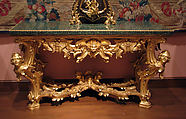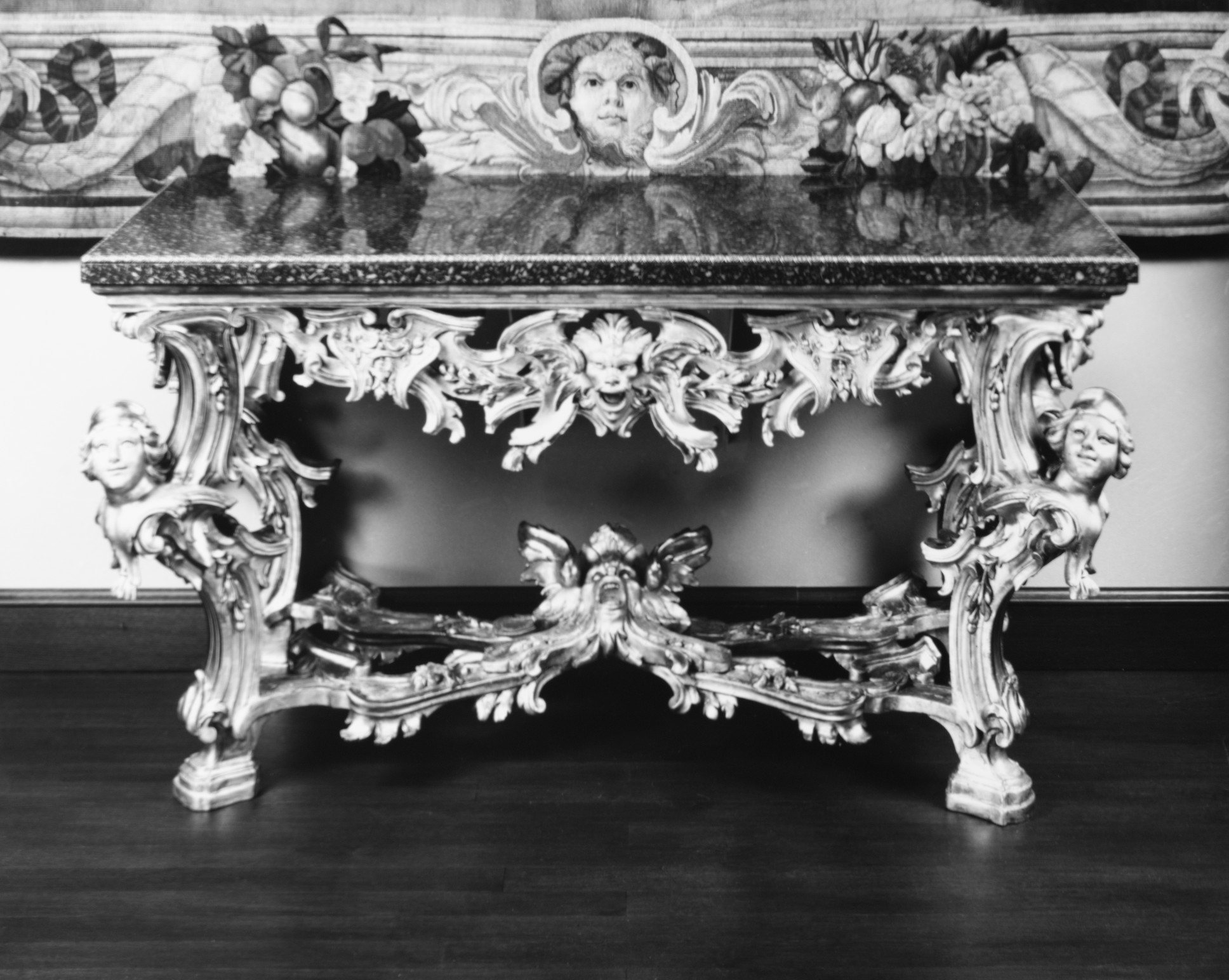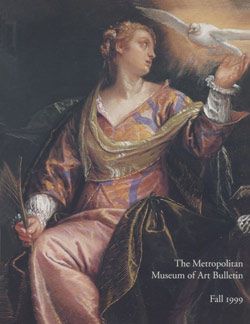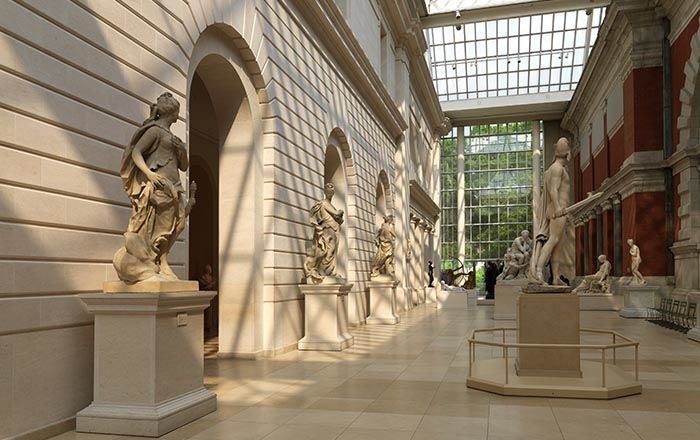Console table
During the late Baroque period exuberantly carved furniture took on a sculptural appearance, reflecting the style's tendency to meld different arts into one complicated whole. Large console tables were an obligatory feature of the parade rooms of aristocratic palaces of the late seventeenth and throughout the eighteenth century. Often ordered in units of two or four, with matching mirrors and stools, such pieces helped to achieve the perfect symmetry of the intended stagelike interior. The boldly scrolled legs carved with female busts wearing light-catching tiaras contrast with the almost weightless look of the fanciful stretchers and the pierced apron friezes. The latter incorporate wingshaped lambrequins and floral sprays over elongated scrolls, with central theatrical demon masks. The delicate gilding grants an illusion that the base is made entirely of precious metal and complements the table's original top of rare and colorful green porphyry, framed by a gilt-bronze border. The Museum's table is an embodiment of the dramatic and vigorous design of late Baroque Rome and an exquisite example of the contemporary art of cutting semiprecious stones and marble in the Eternal City.
This image cannot be enlarged, viewed at full screen, or downloaded.
This artwork is meant to be viewed from right to left. Scroll left to view more.




